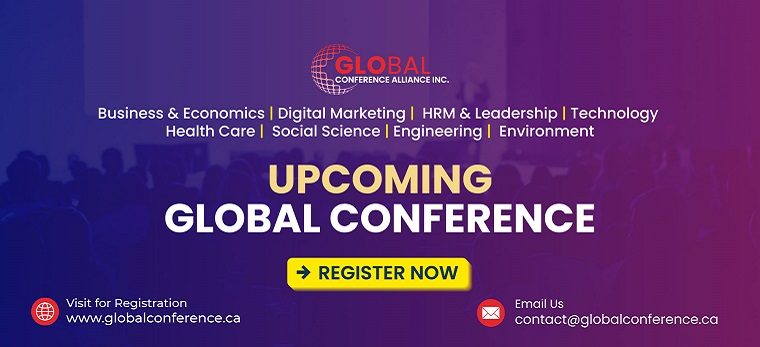

10 Rules for Paper Presentation in Conference
Are you gearing up for a conference presentation? If so, then navigating the world of academic conferences can be a daunting task, but fear not, as we unveil the key to a stellar performance: 10 rules for paper presentation in conference.
In this comprehensive guide, we’ll walk you through the essential principles that will not only boost your confidence but also ensure your research leaves a lasting impression. Whether you’re a seasoned presenter or new to the conference scene, these rules are your roadmap to success.
From crafting compelling visuals to mastering the art of engaging your audience, we’ve got you covered. Join us on this journey as we unravel the secrets to delivering a conference presentation that captivates, educates, and inspires.
What Does the Paper Presentation Mean?
Paper presentation is a vital aspect of academic and professional communication. It serves as a means to spread research findings, innovative ideas, and valuable insights to a diverse audience. These conference paper presentations play a crucial role in conference on arts and education by exchanging knowledge and scholarly discourses.

Effective paper presentations require clear articulation of research objectives, methodologies, and results. Engaging visuals, concise messaging, and audience interaction are crucial elements in conveying complex information. Presenters must also navigate challenges such as time constraints, technical issues, and audience questions gracefully to ensure a successful delivery.
Conference paper presentations often serve as a platform to showcase expertise, establish professional networks, and garner feedback for future research endeavors. Whether in an academic setting or an industry conference, mastering the art of paper presentation is a skill that can significantly impact one’s career and contribute to the advancement of knowledge in various fields.
Types of Paper Presentations
Paper presentations come in various formats, each tailored to specific goals and audiences. These diverse types of presentations are vital in academic and professional settings, serving as vehicles for sharing research findings, ideas, and insights. Here’s a brief overview of some common types:
Oral Presentations

Poster Presentations
In this format, presenters use posters to visually represent their research. Poster sessions offer a more informal setting for one-on-one discussions and are common at academic conferences. They provide a chance to showcase research in a concise and visually engaging manner.
Panel Discussions
Panel presentations involve a group of experts discussing a specific topic or issue. Each panelist shares insights, providing multiple perspectives and fostering in-depth exploration of the subject. Panel discussions are valuable for presenting a well-rounded view of complex topics.
Lightning Talks
Lightning talks are brief, typically 5-10 minute presentations designed to provide quick overviews of research projects or ideas. They are concise and often used to introduce a topic or concept swiftly, making them ideal for conveying key points in a short timeframe.
Symposia are organized sessions that bring together multiple presenters to address a broader theme or research area. They usually consist of several related presentations and discussions, offering attendees a comprehensive exploration of the symposium’s overarching topic.
Workshops are interactive sessions where presenters engage the audience in hands-on activities, skill-building exercises, or collaborative problem-solving. They offer a more immersive learning experience, allowing participants to actively engage with the material presented.

Presenting your research at conferences is a vital opportunity, and the ’10 Rules for Paper Presentation in Conference’ can help you excel. These rules cover key aspects to make your presentations more effective and impactful.

1. Know Your Audience
Understanding your audience’s background, interests, and expertise allows you to tailor your presentation to their specific needs. It enables you to choose the most relevant examples, terminology, and delivery style that will resonate with your audience, fostering a deeper connection and engagement.
2. Craft a Clear Message
A well-structured presentation in a conference with a clear message not only helps your audience follow your research effortlessly but also ensures that they leave with a strong understanding of your key findings. Use a logical flow and a narrative structure that guides them from the problem to the solution, making it easy to absorb complex information.
3. Engage with Compelling Visuals
Utilizing compelling visuals, such as charts, graphs, and images, not only enhances comprehension but also keeps your audience engaged and interested. Well-designed visuals can simplify complex concepts and make your presentation more memorable.
4. Practice, Practice, Practice
Thorough rehearsal is essential to boost your confidence, minimize anxiety, and ensure a polished delivery. It allows you to refine your timing, pacing, and transitions, making your presentation smooth and engaging. Practice in front of peers or mentors to receive constructive feedback.
5. Manage Your Time Wisely
Staying within your allotted presentation time is vital to maintain audience interest and accommodate questions and discussions. Allocate time for each section of your presentation, including a buffer for potential delays, to ensure a smooth and controlled delivery.

6. Dress and Act Professionally
Professional attire and confident body language create a positive impression, helping you establish credibility and captivate your audience. Maintain eye contact, use gestures purposefully, and exhibit enthusiasm for your topic.
7. Connect with Your Audience
Engaging with your audience through eye contact, relatable anecdotes, and interactive elements fosters a stronger connection and enhances understanding. Encourage questions and participation to create a dynamic and engaging atmosphere.
8. Handle Questions with Grace
Effective handling of questions, whether expected or unexpected, demonstrates your expertise and keeps the audience engaged. Be polite, concise, and confident in your responses, and use questions as an opportunity to further emphasize your key points.
9. Rehearse the Q&A Session
Preparation for the Q&A segment is essential. Anticipate potential questions and practice your responses to ensure a smooth and informative discussion. Prepare concise and insightful answers that provide added value to your presentation.
10. Seek Feedback and Continuous Improvement
Gathering feedback from peers and mentors is essential for refining your presentation skills. Act on constructive criticism to improve your future presentations, ensuring that each one is better than the last and aligns more closely with your goals and audience expectations.
With these 10 rules, you can confidently navigate the world of conference presentations, captivate your audience, and make a significant impact with your research.
Why Is Paper Presentation Important at A Conference?
They serve as a vital medium for knowledge dissemination, allowing researchers to share their findings, insights, and innovations with a diverse and knowledgeable audience. This dissemination fosters the exchange of ideas and facilitates collaboration, potentially leading to advancements in various fields of study.

Paper presentations offer a platform for constructive critique and feedback, enabling presenters to refine their research and ideas. Engaging with fellow experts and peers during the Q&A sessions and discussions promotes critical thinking and enhances the quality of research work.
Conference paper presentations contribute significantly to one’s professional development. They provide opportunities to showcase expertise, gain recognition, and establish a presence in a particular field. Additionally, the networking opportunities that conferences offer can lead to valuable collaborations and career-enhancing connections.
The importance of paper presentations at conferences lies in their role as a conduit for the dissemination of knowledge, a forum for constructive engagement, and a catalyst for professional growth and recognition within the academic and professional communities.
Bottom Line
The ’10 Rules for Paper Presentation in Conference’ offer essential guidance for successful presentations. These rules help you connect with your audience, communicate your research effectively, and leave a lasting impression. Whether you’re a seasoned presenter or new to conferences, these rules serve as valuable tools for success.
Paper presentations are key in sharing knowledge, receiving feedback, and building your professional network. They bridge the gap between researchers and their audience, fostering collaboration and idea exchange.
So, as you prepare for your next conference, keep these rules in mind. They will empower you to deliver impactful presentations, connect with your audience, and make a meaningful contribution to your field.

Leave a Comment Cancel Reply
Your email address will not be published. Required fields are marked *
Save my name, email, and website in this browser for the next time I comment.
Don’t miss our future updates! Get subscribed today!
Sign up for email updates and stay in the know about all things Conferences including price changes, early bird discounts, and the latest speakers added to the roster.

Meet and Network With International Delegates from Multidisciplinary Backgrounds.
Useful Links
Quick links, secure payment.

Copyright © Global Conference Alliance Inc 2018 – 2024. All Rights Reserved.
Presenting papers
You’ll present one or more research papers during class. Critically reading research papers is a skill! Here are some tips, ideas, and techniques to help learn it.
Reading the paper
This may be the first time you’re reading research papers, or even the first time you’re reading research papers in the systems area. Welcome!
Research papers are parts of a big conversation among the researchers and practitioners that make up the “research community.” Many papers are best understood as reactions to, and participants in, that conversation, and the ongoing determination of the research community’s values. An important, and often implicit, part of paper reading is learning those values. It’s hard to pick this up in advance. Instead, you just have to dive in and read papers critically. An understanding of the community will come.
The style of most papers is dense (and often just plain bad). But you can get through the density by reading critically.
Don’t try to understand every word of the paper on first read. Instead, try to pick up the most important points by skimming. Then go back in more depth.
On the first read, focus on the paper’s overall goals and techniques. First, read to develop a paper summary in your own words. Here are four questions the summary should answer:
- What is the goal of the paper’s research area? The goal can be something nebulous, like “improving security,” or something concrete, like “improving network utilization.” But in systems the goal usually ties back to something like “spending less money” or “handling more data.” Usually this comes out in the first couple sentences of the abstract and in the introduction. Often those sentences are clichés.
- What is the technical problem the paper is trying to solve? The problem is usually an obstacle to achieving the goal, and it should be concrete; for instance, “Big Data computations in the cloud are delayed too much by stragglers (nodes that complete their portion of the computation much slower than other nodes).” This also is found in the abstract or introduction, but it may be best explained in the conclusion section.
- What is the technical contribution that the paper uses to solve this problem? Is this contribution a new idea, or a combination of old ideas? A good introduction will present the contribution(s), but sometimes you have to dig deeper—into a section called “Design” or “Architecture”—to get to the technical meat.
- What is the evidence that proves the contribution actually addresses the problem? This is presented in depth in the “Evaluation” section, and should be previewed in the abstract and introduction.
Once you have answers to those questions, you can already think critically.
- How far apart are the goal and the problem? For instance, many security papers describe a large, society-level goal, using terms like “Security breaches are estimated to cost US commerce $10B a year,” but then actually address just a tiny slice of that overall goal.
- How much of the problem does the contribution address? Could you have achieved similar improvements using a simpler technique?
- How interesting is the technical contribution on its own? Sometimes a paper is interesting because it identifies and solves a new technical problem, even though its solution techniques seem obvious in retrospect. Sometimes a paper is interesting because it uses new solution techniques, even though those techniques address a problem that’s more easily solved in another way. The best papers do both, but that’s rare. The worst papers do neither.
- How much evidence is provided that the contribution works? Are the experiments well chosen?
- Does the paper actually advance the state of the art? How does it compare to related work ? This is usually addressed in a separate “Related Work” section, which might come second (I prefer it there) or right before the conclusion.
With thoughts about these questions in mind, you can now go back and read the paper in more depth.
- The paper will usually present many techniques and ideas. Which of them seem most important, and which are filler?
- Are there any cool tricks and techniques that you could use in your own systems?
- What would you do differently?
The aim of reading papers critically is not to prove the paper wrong. Always remember that the authors spent much more time working on the paper than you did, and authors rarely lie. (But it does happen!) Instead, read actively , as if you’re in dialogue with the paper. Ask the paper tough questions, and then read to get the responses. If you don’t get a response, that is a flaw in the paper; then ask, is that flaw technical or in the exposition?
Presenting the paper
First share the summary with us. Assume we’ve read the paper, but that we need to be reminded of its contents. Use slides if you need to. (In computer systems most papers are presented at conferences, and the authors’ slides from the conference are often available on the Web. Use them!) Then talk about its coolest ideas and its biggest gaps. Share with us what you might have done differently. Your critical thinking will engage the class more and help us all to better understand the work.
Presenting someone else’s research paper isn’t too different from presenting your own. Check out How to give a good research talk by Simon Peyton-Jones et al.
There’s some advice online about how to present at a journal club. Much of this advice applies specifically to medical papers, but some is good general advice. Some tips from Johns Hopkins

IMAGES
VIDEO